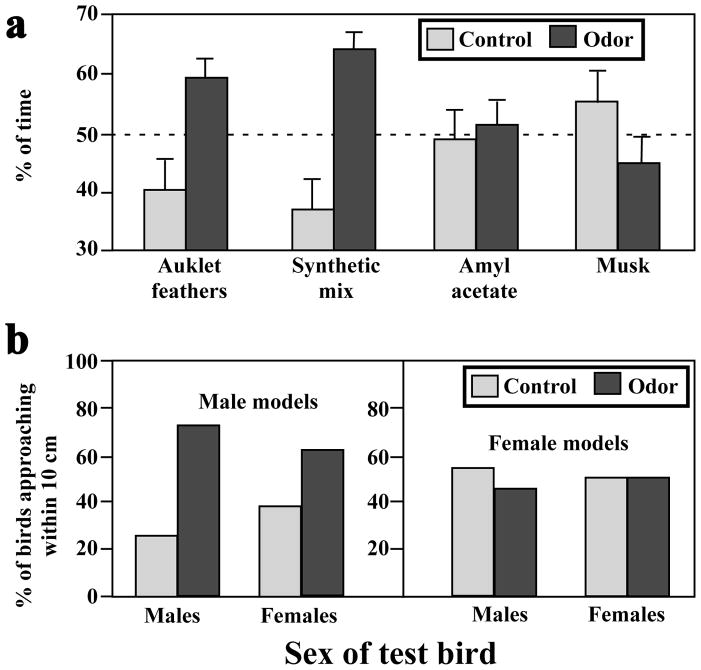Figure 3.
A. Percentage of time (mean ± SEM) spent by crested auklets in the arm of a T-maze next to a specific odor cue (black bars) as compared to the control arm containing no odor. A 50% choice (horizontal dashed line) would be expected in the absence of any attraction/repulsion by the odor. Significant preferences are observed for the auklet natural and synthetic odor, but not for biologically irrelevant odors such as amyl acetate (a chemical compound with a smell similar to banana) or mammalian musk. B. Percentage of male or female crested auklets that approached male or female decoys that had been scented or not with artificial scent (mixture of aldehydes) reproducing the tangerine-like odor produced by auklets during the breeding season. Redrawn from data in Hagelin et al. (2003), Jones et al. (2004) and Hagelin (2007b).

